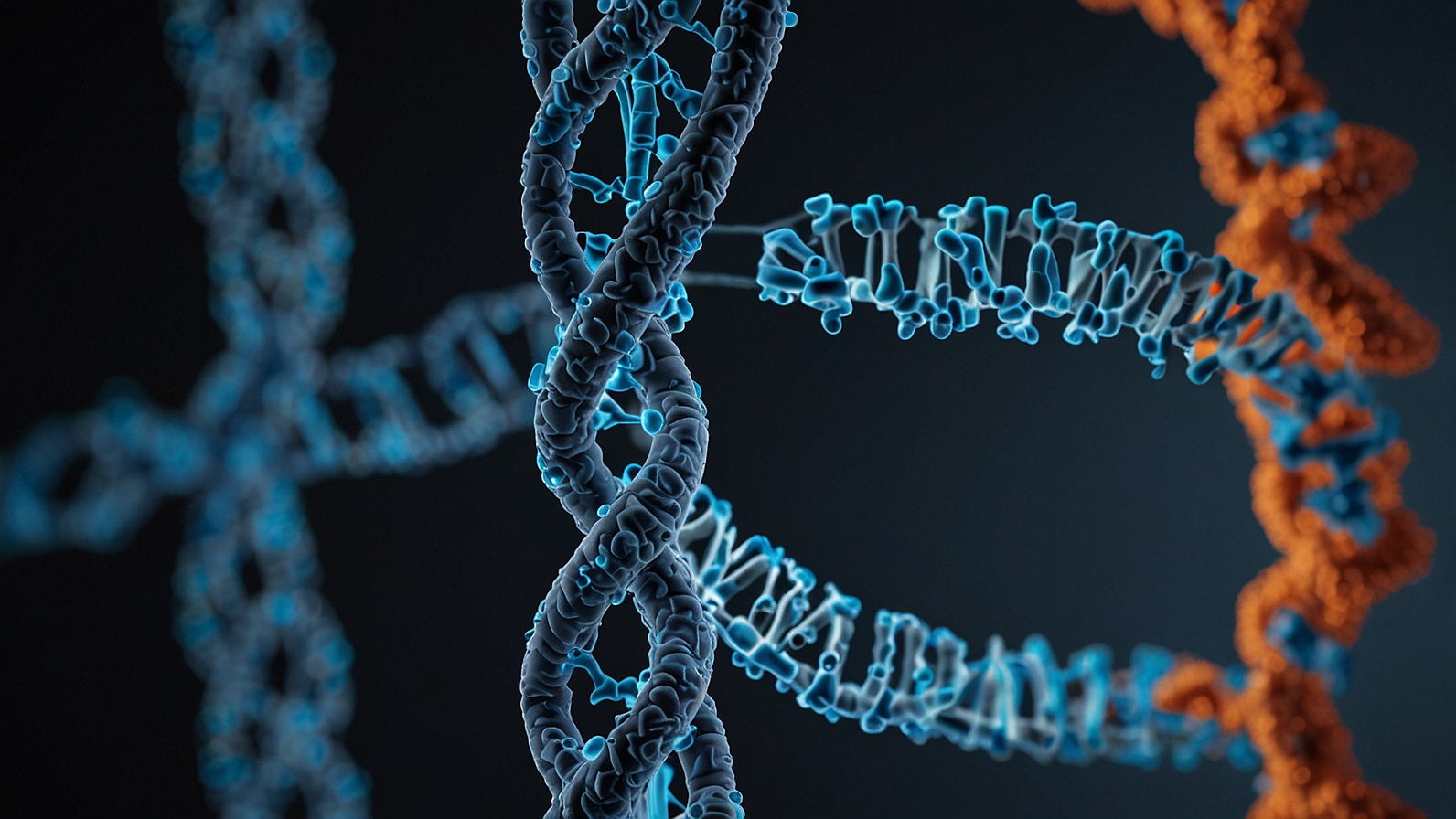Imagine your bloodstream after a meal. It’s like a bustling highway, suddenly flooded with delivery trucks—these are sugar molecules, your body’s prime source of fuel. But this fuel can’t just wander into your cells on its own. It needs a key. And that key is insulin.
At the heart of this entire process is a single, crucial piece of biological code: the INS gene. This isn’t just abstract science; it’s the story of how your body powers every thought, every movement, every heartbeat. And when this story goes off-script, the consequences ripple through millions of lives in the form of diabetes. So, let’s pull back the curtain on this biological maestro and see how it works, why it sometimes fails, and how understanding it is leading to smarter, more life-changing treatments.
Think of your DNA as a massive, multi-volume instruction manual for building and running a human body. The INS gene is a specific, vitally important page in that manual. Its sole job is to hold the instructions for making the hormone we call insulin.
Located on chromosome 11, this gene is a master of efficiency. In the beta cells of your pancreas, it’s read and translated into a single protein chain called preproinsulin. This chain then gets neatly folded and trimmed into the final, active form of insulin—a precise, two-chain molecule ready to go to work. It’s a flawless piece of biological engineering that happens billions of times a day inside you.
So, how does this key actually work? Let’s go back to that sugar-filled bloodstream.
After you eat a carbohydrate-rich meal, your blood glucose levels rise. Your pancreas senses this increase like a delicate thermostat. In response, the beta cells spring into action, releasing the insulin they’ve produced from the INS gene’s instructions.
Now, insulin flows through the blood, binding to receptors on the surface of cells—especially muscle, fat, and liver cells. This binding is like a key turning in a lock. It signals the cell to activate its “GLUT” transporters, which emerge on the cell’s surface and usher the glucose inside.
- In muscle cells, that glucose is used for immediate energy or stored for later.
- In liver cells, it’s bundled up into a storage form called glycogen.
- In fat cells, it helps manage the storage of lipids.
In essence, insulin’s main task is to lower blood sugar by helping your cells absorb it. Without it, that sugar just piles up in the blood, leading to a state of starvation amidst plenty—a core problem in diabetes.
This elegant system is incredibly robust, but it’s not foolproof. Problems with the INS gene or the insulin pathway are at the root of some of the most common diseases on the planet.
Type 1 Diabetes: This is an autoimmune condition. For reasons not fully understood, the body’s own immune system mistakenly attacks and destroys the insulin-producing beta cells in the pancreas. The INS gene is perfectly fine, but the factory that reads its instructions is wiped out. The result? A near-total lack of insulin. Without daily injections of synthetic insulin, a person with Type 1 diabetes cannot survive. It often strikes in childhood, transforming a biological process most never think about into a central, daily focus of life.
Type 2 Diabetes: This is a story of “lock” fatigue. Here, the body initially produces plenty of insulin (the INS gene is working overtime!), but the cells’ receptors become resistant to its signal. The key is there, but the lock is rusty. The pancreas tries to compensate by pumping out even more insulin, but eventually, it burns out. High blood sugar persists, leading to long-term complications like nerve damage, heart disease, and vision problems.
Monogenic Diabetes: In rare cases, a mutation in the INS gene itself is the culprit. This is a spelling error in the genetic blueprint, leading to a faulty insulin protein that doesn’t work properly. A famous example is the company Eli Lilly, which in the 1980s produced the first synthetic human insulin (Humulin) by inserting the correct human INS gene into bacteria—a revolution in treatment safety and availability.
For over a century, the therapeutic use of insulin has been a literal lifesaver. But it’s not a one-size-fits-all medicine. Scientists have cleverly tweaked the insulin molecule to create different types that mimic the body’s natural rhythms.
- Rapid-Acting: Taken right before a meal to handle the incoming sugar load.
- Long-Acting: Provides a low, steady “basal” level of insulin that manages your blood sugar between meals and overnight.
- Intermediate-Acting: A middle-ground option.
Think of it like this: Managing diabetes with insulin therapy is like being the conductor of your own internal orchestra, using different instruments (insulin types) at different times to create a harmonious blood sugar level throughout the day.
And the future is even brighter. Researchers are working on “smart insulins” that only activate when blood sugar is high, and continuous glucose monitors that talk to insulin pumps, creating an artificial pancreas. The goal is to automate this process, giving people back the freedom they lost when their INS gene’s function was compromised.
- It’s a Precision Instrument: The INS gene provides the perfect blueprint for insulin, a hormone that acts as a master key, allowing fuel into your cells.
- Its Failure is a Spectrum: Problems can arise from the immune system (Type 1), cellular resistance (Type 2), or rare genetic errors, but the outcome is a disruption in energy management.
- Science is Catching Up: While insulin therapy is a life-long necessity for some, it’s becoming smarter, more personalized, and less burdensome thanks to ongoing research.
Understanding the INS gene isn’t just about biology—it’s about understanding a force that shapes lives. What other tiny genes do you think hold such immense power over our health?
You May Also Read: Prostavive Colibrim: An Ingredient-Based Look at Prostate Support
Can you be born with a faulty INS gene?
Yes, though it’s rare. Mutations in the INS gene can cause a form of monogenic diabetes, like Neonatal Diabetes Mellitus, which appears in the first six months of life. Genetic testing can often identify these specific mutations.
If I have Type 2 Diabetes, is my INS gene broken?
Usually, no. In most Type 2 cases, the INS gene is normal and produces insulin, sometimes in large amounts. The problem is insulin resistance—the body’s cells don’t respond to it properly.
What’s the difference between human insulin and analog insulin?
“Human insulin” is structurally identical to the hormone we produce. “Analog insulin” is a lab-modified version—a tweaked molecule designed to act faster or last longer in the body, offering more flexible treatment options.
Is insulin a cure for diabetes?
No, it’s a treatment, or more accurately, a life-saving replacement therapy. It manages the symptoms (high blood sugar) but does not address the underlying cause (autoimmunity in Type 1 or insulin resistance in Type 2).
How is insulin made today?
The vast majority is made through genetic engineering. The human INS gene is inserted into bacteria or yeast, which then act as tiny factories, producing pure human insulin that is then harvested and purified.
Can diet and exercise affect how my insulin works?
Absolutely. Regular exercise improves insulin sensitivity, meaning your body needs less insulin to do the same job. A balanced diet helps prevent the extreme blood sugar spikes that stress the system.
What are the symptoms of an insulin problem?
Common signs include extreme thirst, frequent urination, unexplained weight loss, constant hunger, blurry vision, and fatigue. If you experience these, it’s important to see a doctor.

